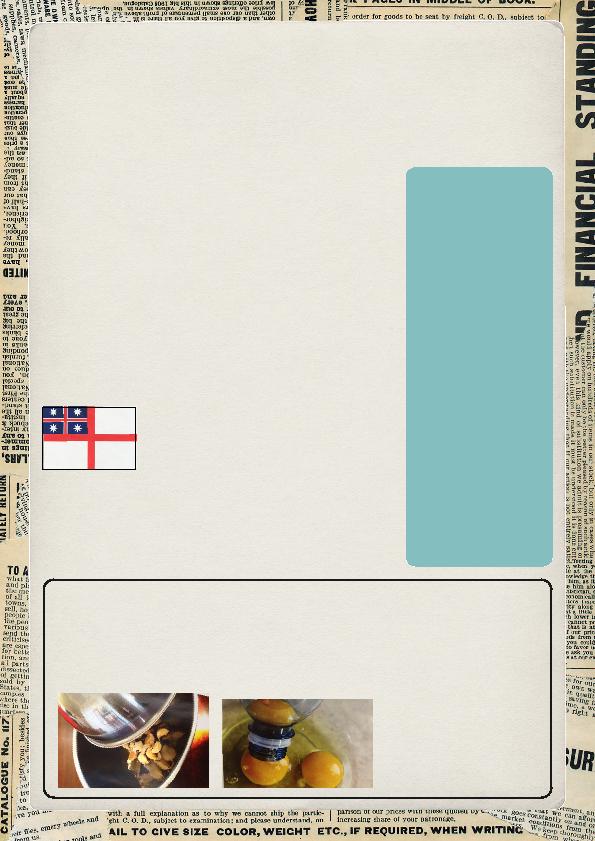
Frontline News
LIFE HACKS FOR THE FOODSERVICE INDUSTRY
Peel a head of Garlic in less than
10 seconds Take a head or garlic
and hit it with the heel of your hand
to get all the cloves. Then get two
aluminium bowls and put everything
from the head of the smashed garlic
into a bowl. Put the second bowl
on top to make a lid and shake like
crazy! Open them up and your garlic
is peeled.
Separate yolks from whites
Separate eggs by gently squeezing a
plastic water bottle over yolk. When
the bottle re-inflates with air, it
will suck up the yolk right up.
(Disclaimer: This method may take a
little practice.)
Give the coffee grinder a clean new
look Grinds can often clump inside
the grinding well of your coffee
maker. To remove stuck-on grinds,
toss a few chunks of stale bread into
the small appliance, pulse, and then
dump the crumbs. The coffee will
stick to the bread.
7th March 1988 Cyclone Bola Strikes
Cyclone Bola, one of the most damaging
cyclones to hit New Zealand, struck
Hawke's Bay and GisborneEast Cape
in March 1988, bringing torrential rain
for more than three days. Worst affected
was the hill country behind Gisborne,
where more than 900mm of rain fell in 72
hours, and one area had 514 mm in a
single day more rain than what parts
of Central Otago get in an average year.
Three people died in a car that was swept
away by flood waters, and thousands were
evacuated from their homes. Cyclone
Bola was estimated to have cost nearly
$170 million in losses to horticulture and
farming, and the cost to the government
was more than $208 million (figures based
on 2013 values).
20th March 1834
New Zealand's first flag chosen
New Zealand's
first official flag
was the flag of
the United Tribes. It was selected on
20th March 1834 by 25 chiefs from the
Far North who, with their followers,
had gathered at Waitangi in the Bay
of Islands. It all came about when the
Hokianga-built trading ship Sir George
Murray was seized in Sydney by customs
officials for sailing without a flag or
registration. Australia, New Zealand's
major trading market, was subject to
British navigation laws under which
every ship had to carry an official
certificate detailing its construction,
ownership and nationality. As New
Zealand was not a British colony, New
Zealand-built ships could not sail under
a British flag or register. Without a flag,
they and their valuable cargoes would
continue to be seized.
19th March 1839 Honey bees brought into New Zealand
Mary Bumby from Yorkshire, left for
New Zealand in September 1838 with
her brother John on board the ship James.
During their journey they stopped off
in Sydney where Mary picked up two
hives of honey bees. In March 1839 they
arrived in Wesleyan Mission Station at
Mangungu, Hokianga where the bees
were introduced into New Zealand. Prior
to this day, New Zealand had two native
species of bees, but neither was suitable
for producing honey.
THIS MONTH IN NEW ZEALAND HISTORY
WHAT'S AHEAD
IN MARCH
Sunday 1st March
Entries open for the
NZ Vegetarian Dish
Challenge 2015
Monday 9th March
Taranaki Anniversary
Monday 16th March
National Honey Week
Tuesday 17th March
St Patrick's Day
Monday 23rd March
Otago Anniversary
Monday 31st March
Tuesday 1st April
2015 Food Safety
and Processing Summit,
Stamford Plaza,
Auckland
order online 24/7 www.bidvest.co.nz
BIDCLUB MARCH 2015 | 7

